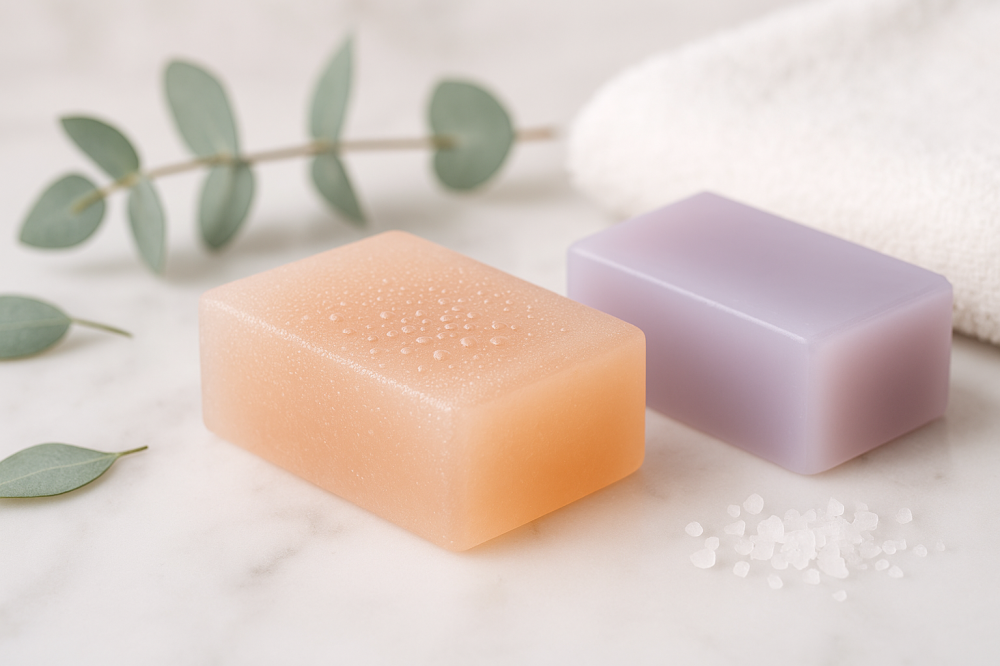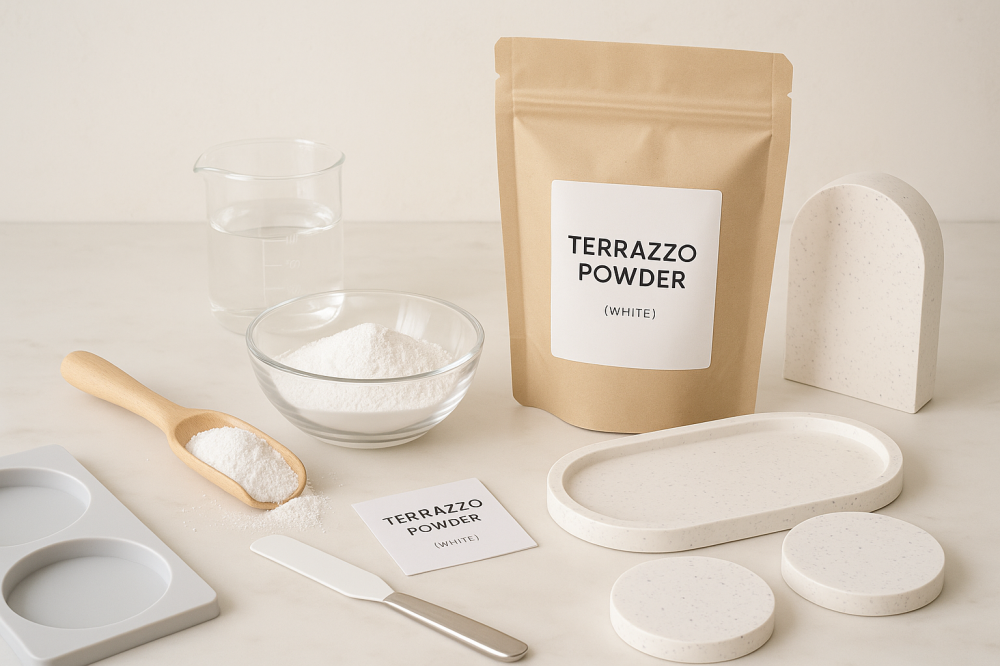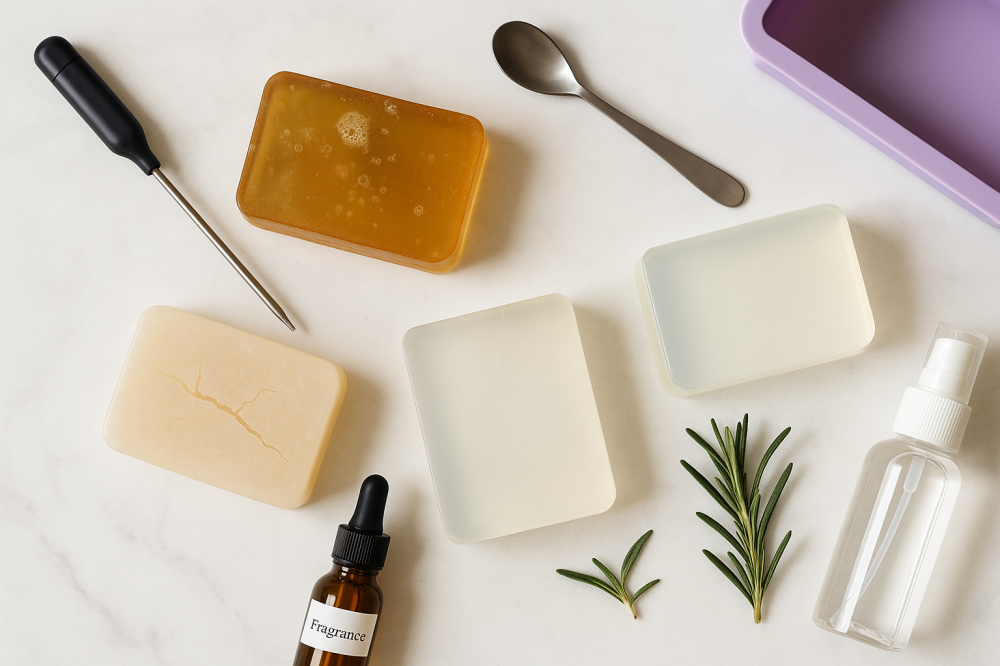“Sweating” is the appearance of water droplets on the surface of glycerin soap, as if the bar is “sweating.” These droplets are not oils, but rather moisture from the air that has been absorbed by the glycerin (a water-loving component). This phenomenon is common with soluble and pourable soap bases, especially in humid environments—but it can be completely controlled by following these steps.
Why does sweating occur?
- The nature of glycerin: It attracts and traps moisture from the air on the surface.
- High humidity and temperature: Storage or display in non-air-conditioned places accelerates the appearance of condensation.
- Sudden temperature changes: Moving pieces from a cold environment to a hot one or vice versa causes moisture to condense.
- Delaying packaging: Leaving the pieces uncovered after unpacking gives them time to absorb moisture.
- Excessive water or moisturizing additives: such as water, gel, honey, or extra oils in large quantities—all increase the likelihood of sweating.
How can I prevent sweating before it starts? (Prevention)
- Cooling in a climate-controlled and dry environment:
- Allow the pieces to cool in an air-conditioned room (around 20–24°C) with low humidity, away from hot drafts or sudden changes in temperature.
- Packaging immediately after unpacking:
- Once the piece has hardened and been removed from the mold, wrap it tightly (with heat shrink wrap or stretchy cellophane). Every minute it's exposed increases the chance of sweating.
- Avoid the refrigerator or freezer:
- Harsh cooling creates a large temperature difference when the item is brought out into the air, causing moisture to condense quickly.
- Reduce additives that attract water:
- If you use water-based or moisturizing additives (such as honey or jelly), use them in very small proportions and with prior testing.
- Choose the add-ons carefully:
- Add color and fragrance at about 55–60°C with gentle stirring—an excess of fragrance or vigorous stirring may cause an uneven surface that catches dew.
- Smart storage for ready stock:
- Store the pieces wrapped inside airtight boxes in an air-conditioned place. Silica gel packets can be placed inside the box to absorb moisture.
- For shipping within the Kingdom:
- Wrap each item tightly, add a silica gel packet to each package, and use cardboard dividers. Avoid exposing packages to sunlight inside the vehicle.
How do I treat excessive sweating if it has already appeared? (Treatment)
- Move the pieces to an air-conditioned, dry room and leave them for a while to allow their temperature to equalize with the surroundings.
- Gently wipe away the drops with a soft, dry tissue—without applying strong pressure so as not to scratch the surface.
- Place the unwrapped pieces temporarily in an airtight container with silica gel packets for hours (or overnight) until the surface is completely dry.
- Re-package tightly once dry.
- Repeat the step for the most affected items or double the barrier: a tight inner sleeve + an outer sleeve for the box if the shipment is long.
Practices that reduce daily sweating
- Test your recipes on small batches before mass production—each fragrance/color behaves differently.
- Do not leave pieces exposed too much after unpacking, even during photography—take a quick shot and then pack.
- Customer care message:
- Write on the label: “Store in a cool, dry place away from sunlight. If light condensation appears, wipe it off gently and reseal.”
Quick questions
Does sweating ruin soap?
It doesn't damage it, but it affects the appearance and feel. It can be wiped clean and re-wrapped.
Does spraying alcohol have an effect?
Medical alcohol is only used to break up bubbles after pouring. Spray lightly on the surface, then allow it to evaporate completely before packaging.
Is it possible to prevent sweating 100%?
In humid environments, sweating is normal with glycerin, but rapid packaging and conditioned storage greatly reduce its occurrence.
Summary
The secret to eliminating the “sweating” of glycerin soap = immediate packaging + dry, climate-controlled storage + reducing water-attracting additives + avoiding temperature differences .
By following these rules, you will get clean-looking, smooth pieces that are ready for display and shipping—even in high humidity.




